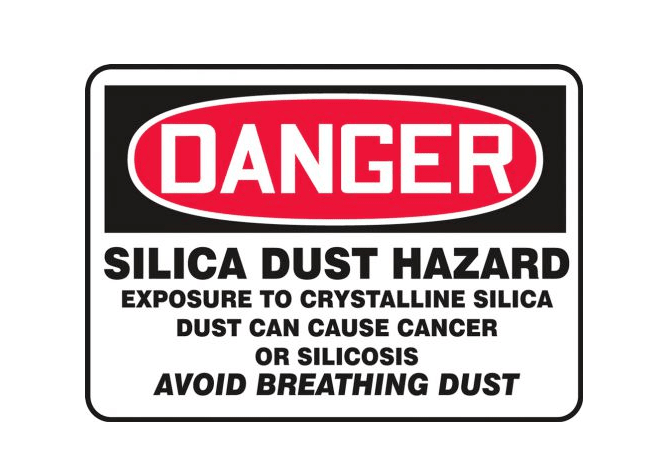Crystalline silica ~ one of our planet’s most abundant and used minerals, can be found everywhere from the beaches where humans gather to vacation, to the very homes in which we live, eat and sleep. Materials like sand, stone, concrete and mortar contain this highly toxic and carcinogenic substance, but they’re not alone: It’s also found in glass, pottery, ceramics, bricks and artificial stone products as well. And it’s not going away any time soon.
These materials, in their final states, pose neither known risks to man nor beasts. Respirable crystalline silica, however, is a whole other animal, posing real threats to those who work around it, not to mention the general public unaware of the air-borne contamination they’re being subjected to. If it had three heads and horns, you’d be able to see it coming to protect yourself, right? But respirable crystalline silica particles are about 1/100th smaller than a single grain of sand, commonly found on beaches and children’s playgrounds, who’s going to see that coming? Answer: no one.
When it comes to silica, size DOES NOT matter. It’s created by cutting, sawing, grinding, drilling, to name a few. Activities such as abrasive blasting with sand, sawing brick and concrete, sanding or drilling into cement walls, grinding mortar or even in the simple manufacturing of brick, concrete block, stone countertops, ceramic products and / or the crushing of such materials puts us all, potentially, in harm’s way. But none more than those working that grind, day in and day out.
It’s estimated that 2.3 million people in the US are exposed to these air-borne devils at work; but that’s the problem. Once airborne, that carcinogen dust is free to float anywhere the wind blows. You can even bring it home, unannounced on your clothing, exposing untold members of your family or community. It all depends on the exposure. Every step we take, every move we make, every breath we take, our exposure to them becomes exponentially greater. And once it’s in the lungs, it’s game over ~ it’s just a matter of time. More than likely, death will arrive in an ugly, untimely manner related to any one of the following silica-related diseases, including:
- Silicosis, an incurable lung disease that leads to disability, if you’re lucky ~ or death, if you’re not;
- Lung cancer (again, it’s HIGHLY carcinogenic, and found everywhere on Planet Earth)
- Chronic Obstructive Pulmonary Disease (COPD), another highly debilitating breathing disorder; and
- Kidney disease (as if any of the prior three were preferable, upon checking out

OSHA, an advocate for workers’ rights and strong arm for the United States Department of Labor, has issued two respirable crystalline silica standards: one for construction, another for general industries and maritime. Ultimately, it is the employers ‘right’ to advise, train, protect and test their employees for such known contaminations in the workplace. But do yourself a favor: ‘Know Your OWN Rights’ regarding silica. And the best resource can be found at www.osha.gov. There, you can deep dive into most any subject related to the workforce today, including silica, just by typing the word into the search bar.
So, in the final analysis: The air we ALL breathe IS free; we ALL inhabit the same planet; and we are ALL mortal. Whether or not that air is clean ~ or filled with killer particulates ~ is anybody’s guess. Do the right thing: Protect yourself; know the signs and heed the warnings. Death by silica-related entities is ugly and devastating for the families left in the wake of its dust, and not just something to be blown off. #OSHA/SilicaHealthEffects/KnowYourRights.